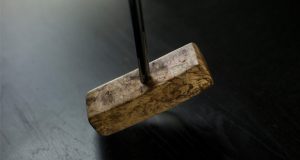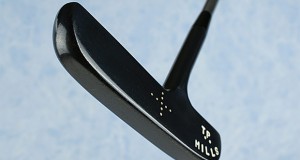It’s no secret that golfers tend to lose their putting touch as the years go on. Indeed, Father Time is particularly unforgiving on the green, where an elder statesman like Tom Watson can compete to the bitter end at the Open Championship, only to strike a shaky putt and watch the title slip through his fingers.
So what is it, exactly, that makes age such a factor in putting performance? Shouldn’t putting—the least physically demanding aspect of the game—be the thing that remains intact the longest? Why has Tiger Woods struggled on the greens in recent years?
An intriguing piece in Columbus Dispatch aims to offer an explanation. Essentially, the article posits one main theory: the act of putting (and more specifically, the act of missing putts) creates mental clutter that builds up over time, eroding confidence on the green.
The author of the piece, Robert Oller, notes, “Tour players generally agree that putting becomes more taxing with age. Their theories range from the anecdotal to the biological. But the majority of players blame it on the simple function of M = L, where M stands for more misses over time and L stands for less confidence.”
Later in the piece, one “expert” is quoted as saying, “What happens over time is your testosterone levels decrease, so as a 20-year-old you’re full of it and you don’t care if you miss a putt because you don’t see many repercussions. But over time your testosterone goes down and estrogen actually goes up, so you’re more like a female, if you want to put it that way. So you start to think about the repercussions of missing that putt. Females think that way from day one. We don’t.”
Say what?
Anyhow, while it’s an interesting piece, we’re not entirely persuaded. There’s no doubt that there’s a mental component to the phenomenon. But might there be another factor, a physical one? Don’t fine motor skills diminish with age, and if so, wouldn’t that be a significant factor in putting performance?
As noted here, in reference to the 65+ age range, “Aging in late adulthood profoundly affects appearance, sensation, and motor abilities…During late adulthood, the senses begin to dull.”
Surely, however, that’s not a process that begins at age 65. The top of the bell curve would come much earlier. It’s not unreasonable to think that the physical component of putting could begin faltering in one’s late 30s or early 40s. And since the slightest twitch or loss of fine control can cause a putt to miss the hole, the problem could be physical as well as mental, or physical before becoming mental.
There’s no doubt that the phenomenon of age-related putting issues is real. As for what the cause is, there are more questions than answers. We’d love to know your thoughts and theories on the subject, too.
 PutterZone – Best Putter Reviews
PutterZone – Best Putter Reviews




Nice Post,
That does make a lot sense. Although I have been playing golf for over 20 years and don’t feel as if it’s getting any worse. I think the key is to maintain your stroke and routine. If that at least remains constant you should consistently make the same amount of putts you did when you first started playing.
Cheers